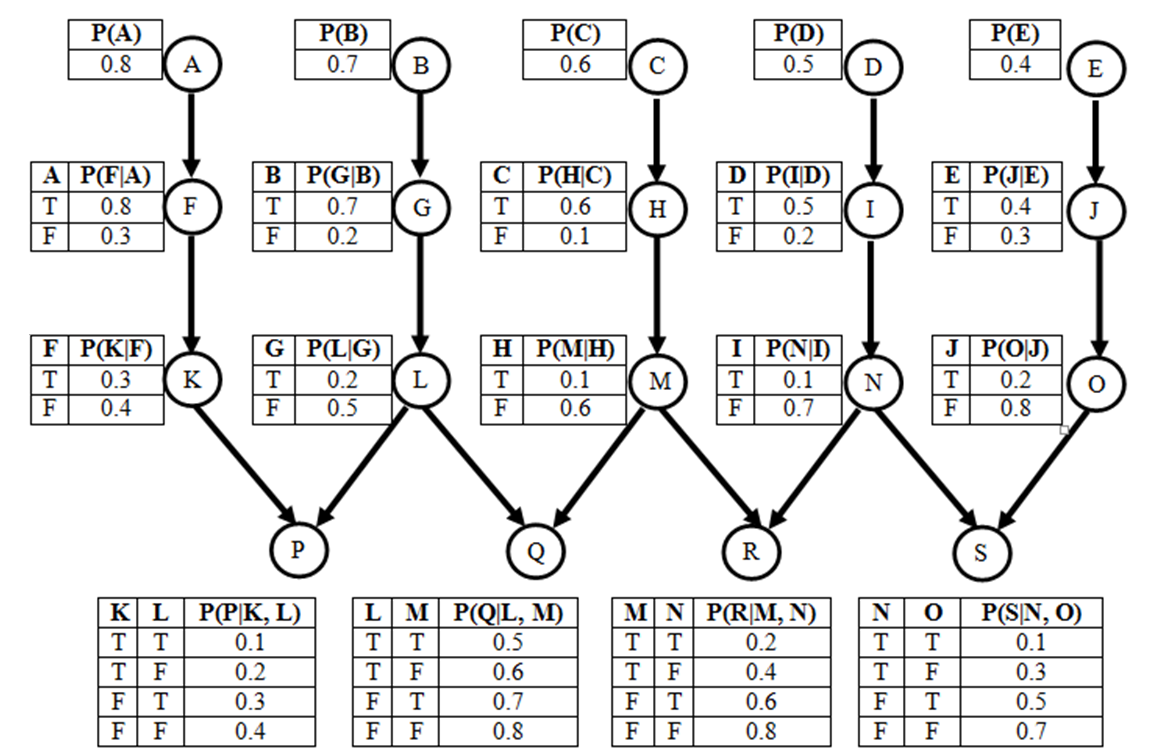Samples for Quiz 4
Task 1
Consider
the given joint probabilty distribution for a domain of two variables
(Color, Vehicle) :
|
Color = Red
|
Color = Green
|
Color = Blue
|
Vehicle = Car
|
0.1184
|
0.1280
|
0.0736
|
Vehicle = Van
|
0.0444
|
0.0480
|
0.0276
|
Vehicle =
Truck
|
0.1554
|
0.1680
|
0.0966
|
Vehicle = SUV
|
0.0518
|
0.0560
|
0.0322
|
Part a: Calculate P ( Color is
not Green | Vehicle is Truck )
Part b: Check if Vehicle and
Color are totally independant from each other
Task 2
In
a certain probability problem,
we have 11 variables: A, B1,
B2,
..., B10.
- Variable A has 7 values.
- Each of variables B1, ..., B10 have 8
possible values. Each Bi is
conditionally indepedent of all other 9 Bjvariables
(with j != i) given A.
Based
on these facts:
Part
a: How
many numbers do you need to store in the joint distribution table of
these 11 variables?
Part
b: What
is the most space-efficient way (in terms of how many numbers you need
to store) representation for the joint probability distribution of
these 11 variables? How many numbers do you need to store in your
solution? Your answer should work with any variables satisfying the
assumptions stated above.
Part
c: Does this
scenario follow the Naive-Bayes model?
Task 3
Part a (Solve before Part b)
George
doesn't watch much TV in the evening, unless there is a baseball game
on. When there is baseball on TV, George is very likely to watch.
George has a cat that he feeds most evenings, although he forgets every
now and then. He's much more likely to forget when he's watching TV.
He's also very unlikely to feed the cat if he has run out of cat food
(although sometimes he gives the cat some of his own food). Design a
Bayesian network for modeling the relations between these four events:
- baseball_game_on_TV
- George_watches_TV
- out_of_cat_food
- George_feeds_cat
Your
task is to connect these nodes with arrows pointing from causes to
effects.
Part b (Solve after Part a)
You have been given the correct answer for Part A (here). You have also
been given the conditional probabilties of each variable given it's
parents. Calculate P
( not(Baseball Game on TV) | not(George Feeds Cat) ) using Inference by
Enumeration
Task 4

Part a: On the
network shown above, what is the Markovian blanket of node L?
Part
b: On
the network shown above, what is P(A, F)? How is it derived?
Part c: On
the network shown above, what is P(M, not(C) | H)? How is it
derived?
Note: You do not have to use Inference by Enumeration for parts b and c.
